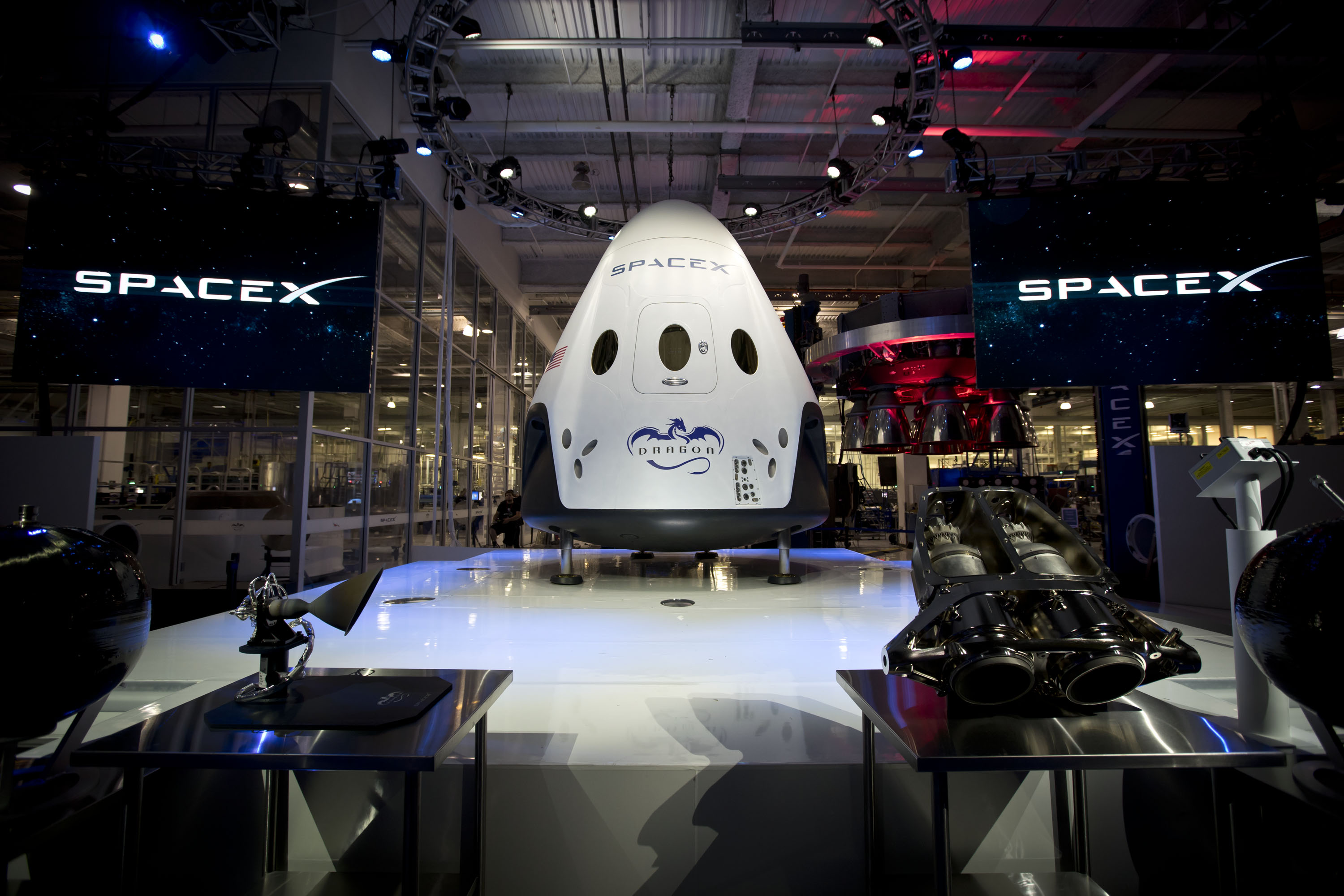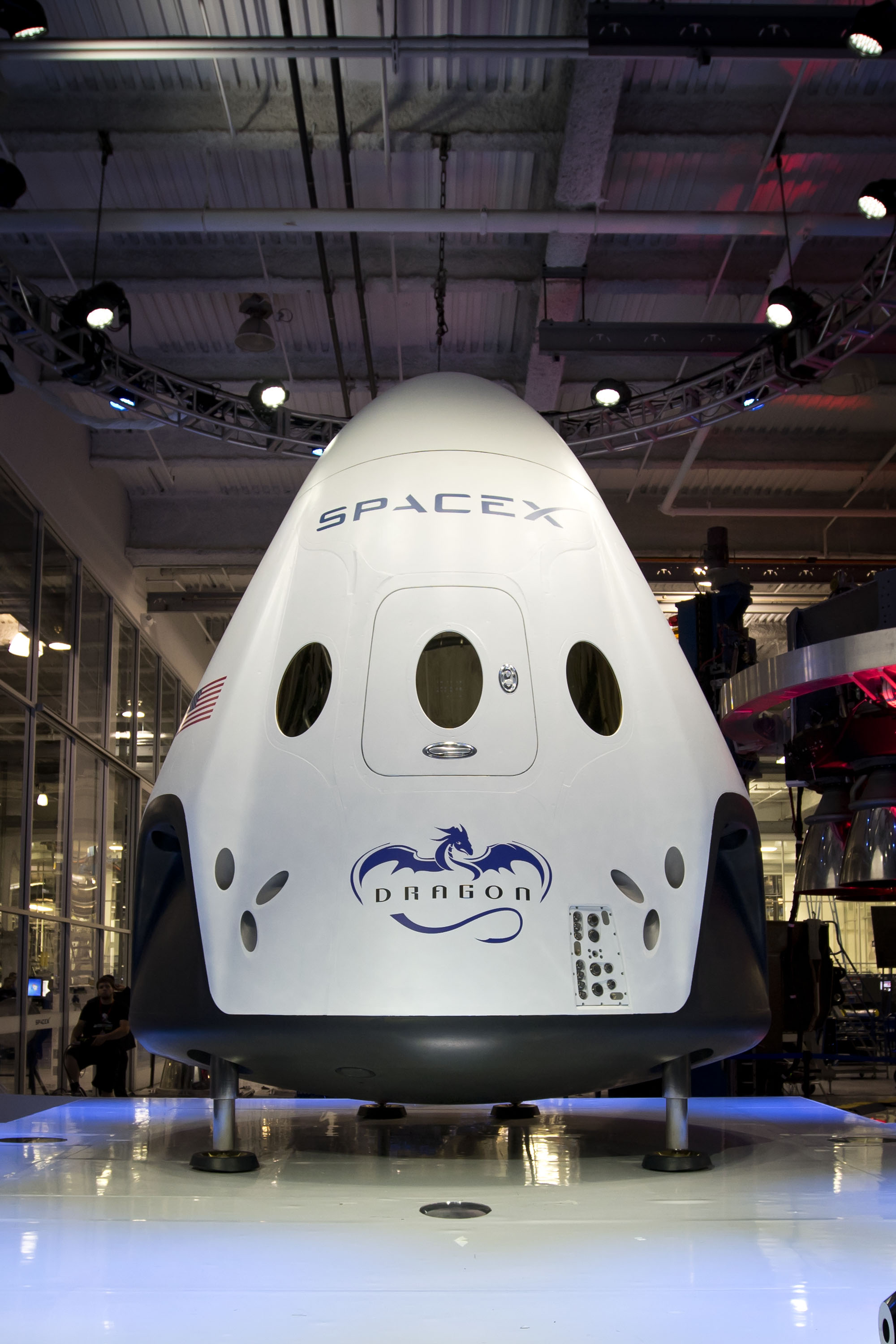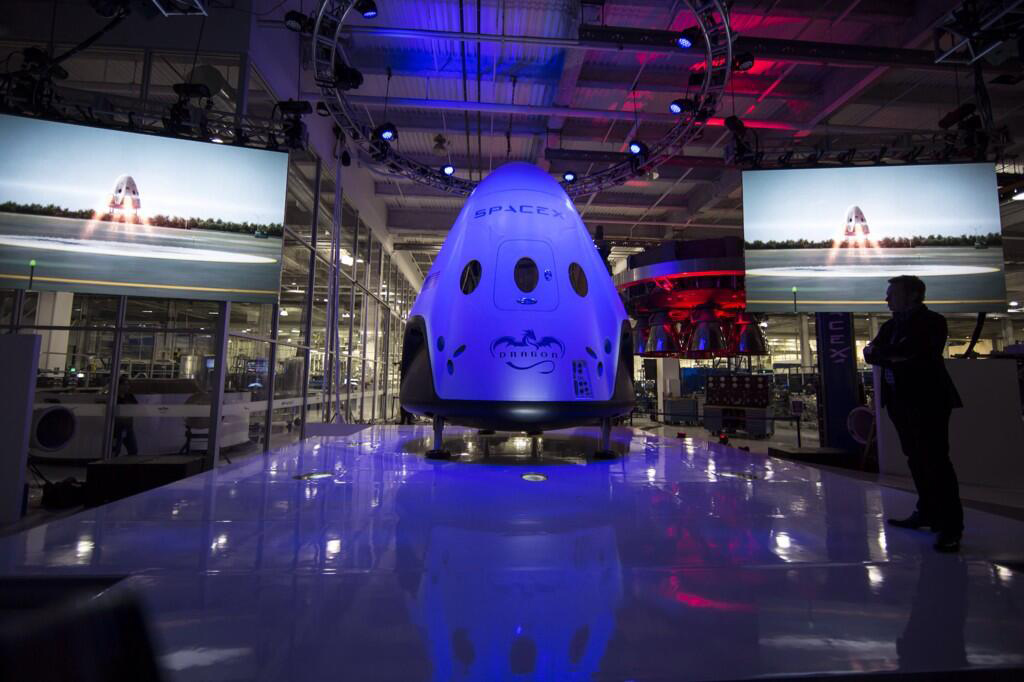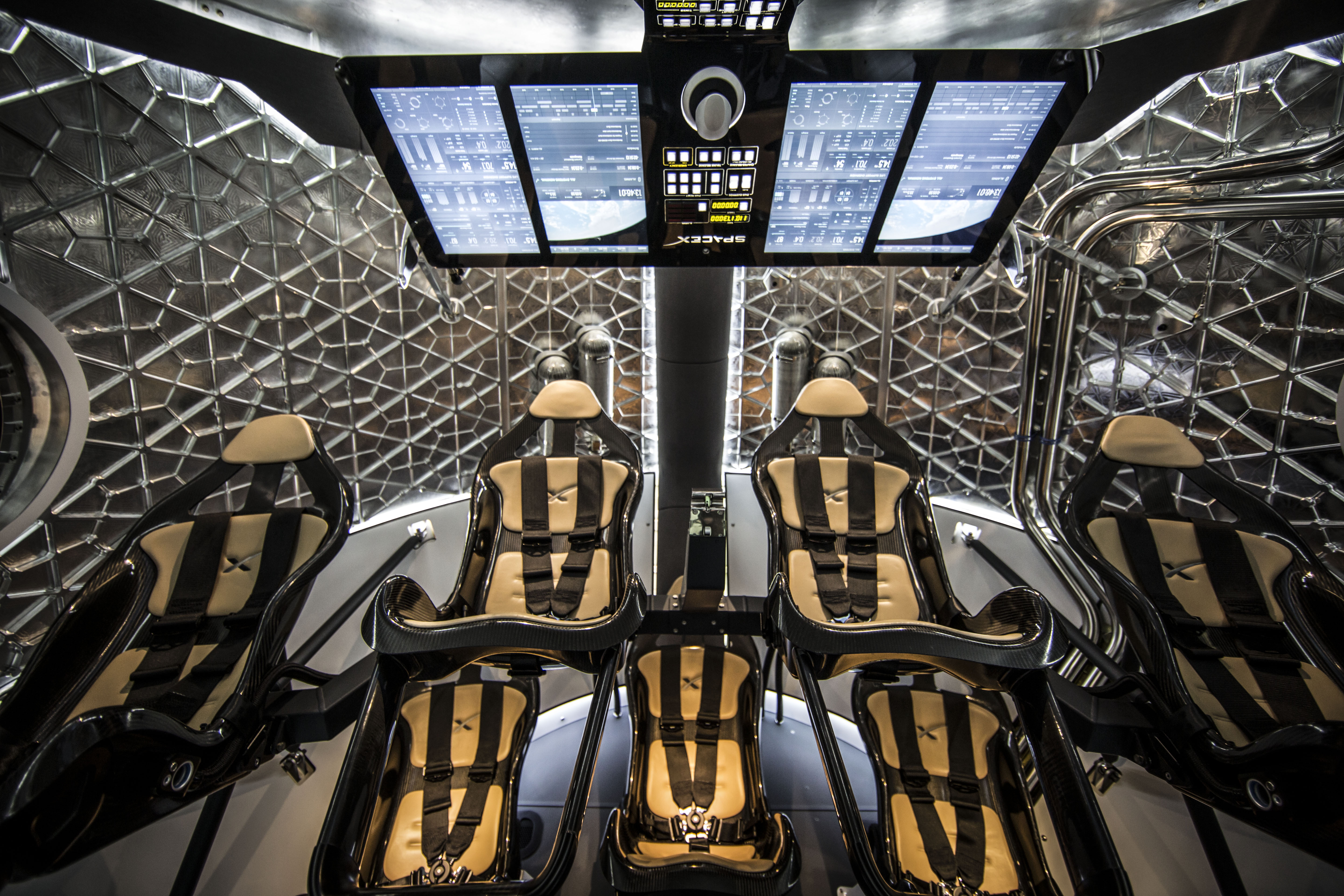SpaceX Unveils Dragon V2 Spaceship, a Manned Space Taxi for Astronauts (Video, Photos) (original) (raw)

SpaceX's manned Dragon Version 2 can carry as many as seven astronauts into orbit. Image released May 29, 2014. (Image credit: SpaceX)
Elon Musk, the billionaire entrepreneur behind the private spaceflight company SpaceX, unveiled his firm's latest innovation — the Dragon V2 manned spaceship —Thursday night (May 29) in a stylish debut for the 21st-century space taxi for astronauts.

SpaceX's Dragon Version 2 spaceship is designed to be reusable. The company plans to conduct to tests of the vehicle's launch-abort system in November 2014 and January 2015. Image released May 29, 2014. (Image credit: SpaceX)
SpaceX's Dragon Version 2 crewed spacecraft has a sleek interior design, complete with a large tablet-like computer that swivels down in front of the capsule's tan leather seats. The manned space capsule can ferrying up to seven astronauts to and from destinations like the International Space Station, Musk said during the reveal, which SpaceX webcast live online from its headquarters in Hawthorne, California.
"I think it's really a big leap forward in technology," Musk said. "It really takes things to the next level." [See more photos of the newly revealed Dragon Version 2]

SpaceX CEO and Chief Designer Elon Musk (right) unveils the Dragon V2 manned spacecraft on May 29, 2014 during an event at the company's Hawthorne, California rocket factory. The Dragon V2 is designed to carry up to seven astronauts on roundtrip spaceflights. (Image credit: SpaceX)

Already tested as a cargo carrier, the Dragon spacecraft can also be fitted out to shuttle passengers to low orbit and to the International Space Station. See how SpaceX's Dragon capsules work in this SPACE.com infographic. (Image credit: Karl Tate, SPACE.com Contributor)
"When we first created Dragon Version 1, we didn't know how to create a spacecraft," Musk said. "We'd never designed a spacecraft before … It's a great spacecraft, and it was a great proof of concept. It showed us what it took to bring something back from orbit, which is a very difficult thing to do. Usually when something comes in from orbital velocity, it burns up in a big fireball. But going from Dragon Version 1, we wanted to take a big step in technology."
SpaceX has been launching unmanned Dragon Version 1 capsules to the space station since 2012 using its Falcon 9 rockets. The company has flown three of 12 cargo missions to the station for NASA under a $1.6 billion deal. The Dragon V2 is SpaceX's entry to fly NASA astronauts to the station as part of the U.S. space agency's commercial crew program.
Rival aerospace companies Boeing and Sierra Nevada are also developing their own commercial space taxis as part of that competition. NASA's commercial crew program is expected to make a decision on which vehicles to advance into the next selection phase by July or August, with the goal of a manned flight by 2017.
The new Dragon V2 is an updated version of the company's robotic Dragon capsule — currently used to take cargo to the space station and bring materials back to Earth. At the moment, the Dragon is the only robotic cargo vessel that can bring supplies back to the planet from the station. (Another company, the Virginia-based Orbital Sciences, has a $1.9 billion contract to deliver station cargo, but its Cygnus vehicles are intentionally destroyed at mission's end.)
Breaking space news, the latest updates on rocket launches, skywatching events and more!
SpaceX's new spacecraft is designed to be reusable and it should be able to touchdown back on land with the accuracy of a helicopter, Musk added.
"That is how a 21st-century spaceship should land," he said.
Unlike the unmanned version of the Dragon, which uses the station's robotic arm to berth to the orbiting outpost, Version 2 will be able to autonomously dock to the space station. A pilot will also be able to park the spacecraft using manual controls if needed, Musk said.

This wide shot of Dragon Version 2's interior shows the futuristic display screen and leather-lined seats. Image released May 29, 2014. (Image credit: SpaceX)
Musk founded SpaceX in 2002 with the intention of lowering the cost of spaceflight with affordable, reusable technologies. Dragon Version 2 can be rapidly reusable, according to Musk.
"You can just reload propellants and fly again," Musk said. "This is extremely important for revolutionizing access to space because so long as we continue to throw away rockets and spacecraft, we will never have true access to space. It will always be incredibly expensive."
Follow Miriam Kramer @mirikramer and Google+. Follow us @Spacedotcom, Facebookand Google+. Original article on Space.com.

Join our Space Forums to keep talking space on the latest missions, night sky and more! And if you have a news tip, correction or comment, let us know at: community@space.com.
Miriam Kramer joined Space.com as a Staff Writer in December 2012. Since then, she has floated in weightlessness on a zero-gravity flight, felt the pull of 4-Gs in a trainer aircraft and watched rockets soar into space from Florida and Virginia. She also served as Space.com's lead space entertainment reporter, and enjoys all aspects of space news, astronomy and commercial spaceflight. Miriam has also presented space stories during live interviews with Fox News and other TV and radio outlets. She originally hails from Knoxville, Tennessee where she and her family would take trips to dark spots on the outskirts of town to watch meteor showers every year. She loves to travel and one day hopes to see the northern lights in person. Miriam is currently a space reporter with Axios, writing the Axios Space newsletter. You can follow Miriam on Twitter.